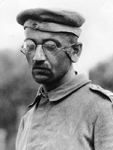At a Glance
Description
Humanitarian law and history are hardly mutually exclusive.
Producer
Red Cross: Exploring Humanitarian Law

The first question likely on your mind is, "How can I mesh humanitarian law with history? It's a bit off-topic, isn't it?" You may be interested in the topic, and see its merit, but not know how to include it in your classroom.
The Red Cross makes a point of listing ways that history and humanitarian law intersect. Their examples include
- Prisoners of War: Andersonville and British POW ships of the Revolutionary War
- Banned weapons: As part of the history of science and technology
- Human dignity and bystander action: Las Casas, citizens against Native American removal in the 1830s, Helen Hunt Jackson, World War II, and women's and civil rights movements
- Refugees: How have they impacted our history and culture?
Still not convinced? Try reading their standards guide.
The site contains a curriculum which specifically details factors such as the amount of time needed for each module component and the required preparation.
Maybe a full curriculum won't really fit in your classroom. That doesn't mean the site should be written off. Try their resources page. Here, you can find a glossary, a teaching guide, suggested supplemental films and videos, articles, websites, and examples of student work (art and poetry). Perhaps most useful of all, the site offers a series of lessons on the Civil War, as viewed from a humanitarian perspective.